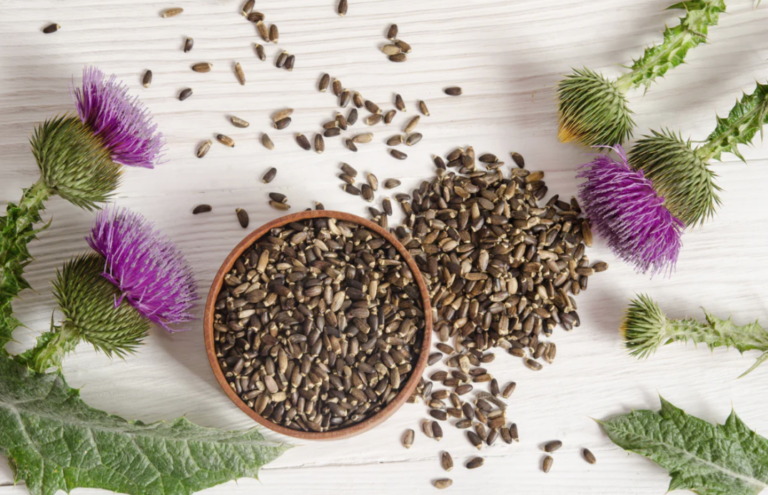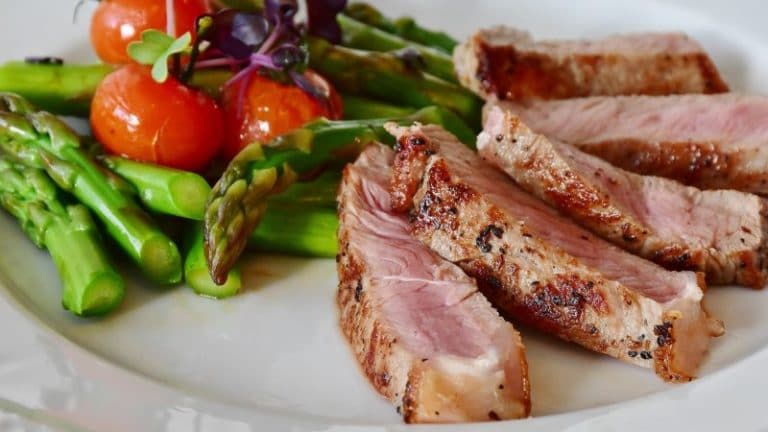20 Vitamin K Foods That Should Be Part of Your Diet in 2024

Our health greatly depends on vitamin K as this nutrient plays an essential role in numerous physiological processes. Among other things, it contributes to blood clotting, and it is involved in bone metabolism. Considering its health benefits, it’s of great importance to consume a sufficient amount of vitamin K foods daily. Here you can find a list of rich sources of this vitamin that you should add to your eating plan. It’s good to know that a truly healthy diet needs to include various foods rich in vitamins, minerals, and other essential nutrients.
What Is Vitamin K?
Vitamin K covers several fat-soluble compounds, including vitamin K1 (phylloquinone) and vitamin K2 (a group of menaquinones). Vitamin K1 is present in various foods, while our body can produce vitamin K2. However, experts are uncertain about the quantity of vitamin K produced in our gut as they don’t know much about its absorption and transport.
Vitamin K Benefits
The synthesis of the proteins responsible for blood clotting depends on vitamin K. Therefore, maybe the most critical vitamin K function is its contribution to blood clotting, which prevents us from bleeding excessively. However, some people’s blood clots too easily, so they need to take certain medications, including warfarin or Coumadin, its brand name.
Those people should know that vitamin K can counteract this medicine, reducing its effectiveness. That said, vitamin K foods to avoid while on Coumadin, or at least try to eat moderately, are asparagus, parsley, kale, broccoli, cauliflower, spinach, Brussel sprouts, and green onions.
Vitamin K is also added to cosmetic products used for preventing spider veins. In addition, vitamin K cream can treat bruises and reduce dark circles under the eyes. Since some proteins present in bones depend on vitamin K, this nutrient is involved in maintaining bone health. According to a study dealing with the benefits of vitamin K for bone loss, this vitamin can strengthen our bones, reducing the risk of bone fractures.
A vitamin K-dependant protein is responsible for preventing vascular calcification, which can lead to coronary heart disease. However, more studies should be conducted to explain the role of vitamin K in reducing the risk of heart disease.
Vitamin K Foods
Vitamin K is present in many foods, so you can easily include it in your diet. Various vegetables, especially green leafy veggies, and fruits are excellent sources of vitamin K1. On the other hand, vitamin K2 foods are meat, dairy products, and eggs. If you are taking warfarin or a similar anticoagulant, your intake of vitamin K should be constant.
Therefore, it’s good to know that there is a wide range of foods with a low content of this vitamin, which won’t interfere with your therapy. Some of the foods low in vitamin K are sweet corn, onions, sweet potatoes, tomatoes, cucumbers (raw), bananas, pineapple, apples, and peaches.
However, if you’re looking to increase your vitamin K intake, here are the foods you should consider adding to your regular diet.
Natto
“Which is the best source of vitamin K?”—many people wonder. Natto is a traditional Japanese dish that is made from soybeans fermented with Bacillus subtilis. So it is definitely part of menaquinone food sources. In other words, in just three ounces of this food, you get 708% of the vitamin K’s DV. In addition, it is high in several minerals, including magnesium, manganese, iron, and copper.
Soybeans
Even when not fermented, soybeans belong to foods rich in vitamin K. In fact, half a cup of roasted soybeans serves 36% of the vitamin’s recommended DV. Moreover, they’re a great source of B vitamins, such as thiamin, riboflavin, and folate. They also provide a wide range of minerals, including magnesium, phosphorus, copper, and manganese.
Kale
Green leafy veggies are among the richest sources of this vitamin. Therefore, kale belongs to vegetables high in vitamin K. If you eat a cup of raw kale, you will cover 94% of this vitamin’s DV. What’s more, this veggie has a high content of vitamin A and vitamin C. Additionally, it may lower cholesterol, prevent cancer, and help you lose weight, as it fills you up with water and only a few calories.
Collards
In addition to kale, vitamin K is also abundant in other green leafy vegetables, such as collards or collard greens. Namely, half a cup of boiled collards will provide you with 442% of the K vitamin’s DV. Moreover, this type of vegetable is high in vitamin C and vitamin A and can help decrease your chances of osteoporosis.
Turnip Greens
Turnip greens are vegetables with vitamin K. Notably, half a cup of boiled turnip greens has 355% of the vitamin’s DV. Furthermore, this veggie is an excellent source of other vitamins and minerals. It’s rich in folate, vitamin A, magnesium, phosphorus, vitamin C, manganese, and calcium.
Spinach
One cup of raw spinach contains 121% of the K vitamin’s DV. Besides belonging to foods high in vitamin K, this green leafy veggie is rich in vitamin C, vitamin A, folate, and manganese, so it is an excellent addition to your eating plan. Some of its health benefits include aiding in weight loss, preventing cancer, reducing blood sugar, and helping with bone health.
Cabbage
Cabbage has vitamin K, too. A cup of cooked cabbage provides about 136% of this vitamin’s DV. Furthermore, it’s packed with nutrients, like vitamin C, folate, and B6. It helps with inflammation, may lower cholesterol levels, helps with digestion, and may lower blood pressure.
Brussel Sprouts
What about Brussel sprouts and vitamin K? A cup of cooked Brussel sprouts gets you 182% of the vitamin K’s DV. What’s more, they may help you avoid high blood pressure, heart disease, diabetes, and high cholesterol. Brussel sprouts contain carotenoids, which are colorful pigments found in plants, good for your eyes.
Asparagus
You’ll find vitamin K in asparagus as well. A cup of cooked asparagus gets you 76% of this vitamin’s DV. Asparagus is high in folate, fiber, and vitamins C, K, and A. Furthermore, there are many health benefits from asparagus, like weight loss, healthy pregnancy outcomes, and improved digestion.
Cauliflower
There is vitamin K in cauliflower, as a cup of raw cauliflower provides you approximately 14% of the K vitamin’s DV. Also, cauliflower is naturally high in fiber and B vitamins, providing antioxidants that can protect against cancer. Its fiber content may help with weight loss and digestion.
Iceberg Lettuce
We can find vitamin K in lettuce, too. An example of that is iceberg lettuce. For instance, one cup of raw iceberg lettuce serves 12% of this vitamin’s recommended DV. This veggie is not considered a highly nutritious food, but it provides small amounts of other vitamins and minerals.
Parsley
Parsley is usually added to various dishes to improve their taste. However, it also offers many health benefits thanks to its nutrient content. As a cup of parsley provides you 820% of the vitamin K’s DV, parsley is one of the vitamin K–rich foods. It is also rich in vitamin C and vitamin A. In addition, it is a good source of iron.
Mustard Greens
Like other green leafy vegetables, mustard greens are also rich vitamin K sources. Namely, you will cover 690% of this vitamin’s DV with one cup of cooked mustard greens. Moreover, they provide a considerable amount of vitamin A, vitamin C, and folate, and they may improve eye and heart health.
Kiwi Fruits
There is a wide range of vitamin K–rich fruits, and one of them is a kiwi. As a matter of fact, in one cup of this fruit, you will get 60% of the vitamin’s recommended DV. Furthermore, kiwi fruits are a rich source of vitamin C, so you can eat them to boost your immune system. Also, kiwis help with heart health and digestive health.
Avocados
Avocados are highly nutritious as they contain a variety of vitamins and minerals. In fact, there’s vitamin K in avocado, too, as one cup of mashed avocado has 40% of the vitamin K’s recommended DV. In addition, this type of fruit is an excellent source of vitamin B5, dietary fiber, vitamin C, folate, and potassium.
Blueberries
Blueberries are also sources of vitamin K. Notably, half a cup of raw blueberries can provide you with 12% of this vitamin’s DV. They have powerful antioxidant properties thanks to a high vitamin C content, and they are also rich in manganese. In addition, they’re considered to improve skin health, manage diabetes, and prevent cancer.
Pomegranate Juice
Pomegranate juice is a good source of vitamin K. If you drink ¾ of a cup of this fruit juice, you will get 16% of the K vitamin’s DV. Moreover, it will provide you with folate and several minerals, including potassium and manganese. Also, drinking pomegranate juice daily may lower systolic blood pressure.
Grapes
Grapes offer numerous health benefits thanks to their high antioxidant content. They are foods with vitamin K, as half a cup of this fruit has 9% of the vitamin’s recommended DV. In addition, they are rich in vitamin C and copper. Grapes help the cardiovascular system and reduce inflammation.
Prunes
Prunes are packed with vitamins and minerals. With only one cup of pitted prunes, you will cover 86% of this vitamin’s DV. Besides belonging to foods with vitamin K, they are rich in niacin, vitamin A, potassium, manganese, copper, vitamin B6, and riboflavin (B2). Prunes may also help prevent bone loss.
Blackberries
“What fruit is high in vitamin K?”—people want to know. Blackberries are undoubtedly a rich source of this vitamin, as one cup of raw blackberries covers 24% of the K vitamin’s DV. In addition, they have a high content of vitamin C. Blackberries also contain various minerals, including copper and manganese.
Pumpkin
Pumpkin offers a variety of health benefits as it contains many vitamins and minerals. Half a cup of canned pumpkin has 17% of this vitamin’s DV, so we can see it’s a food high in vitamin K. Moreover, it is a fantastic source of vitamin A. It’s also rich in various minerals, such as iron and manganese.
Chicken Breast
Chicken breast is one of the foods high in vitamin K2. Namely, a three-ounce serving of rotisserie chicken breast provides you with 11% of the vitamin K’s DV. Furthermore, chicken breast is particularly rich in vitamin B6 and niacin. It is also a great source of selenium and phosphorus.
Beef
Beef is another food source of menaquinone since three ounces of broiled ground beef serve 5% of the vitamin’s recommended DV. In addition to being an excellent source of protein, beef is rich in B vitamins, including vitamin B12 and niacin. It’s also a great source of minerals, especially zinc.
Eggs
Some other menaquinone sources include eggs. Although they’re not exceptionally high in this vitamin, they provide a small amount. In other words, one large hard-boiled egg can cover 3% of this vitamin’s DV. Moreover, eggs contain almost all the other vitamins and minerals, so you should include them in your diet.
Hopefully, this vitamin K foods list will help you create your eating plan to cover your daily needs of this essential vitamin.
Recommended Daily Intake
The Dietary Reference Intakes, established by the Food and Nutrition Board (FNB), provide the Adequate Intakes (AI) for vitamin K and the recommended daily values for other important nutrients. The AIs for this vitamin differ depending on age and sex. It’s recommended that you meet your needs for this nutrient primarily by consuming vitamin K food. The Adequate Intakes for vitamin K are presented below:
- from birth to 6 months — 2 mcg
- from 7 to 12 months — 2.5 mcg
- from 1 to 3 years — 30 mcg
- from 4 to 8 years — 55 mcg
- from 9 to 13 years — 60 mcg
- from 14 to 18 years — 75 mcg
- 19+ years — 120 mcg (male) and 90 mcg (female)
Vitamin K Deficiency
Healthy adults who follow a varied diet are rarely deficient in vitamin K. A deficiency in this nutrient is characteristic of people suffering from malabsorption disorders or those who take medicines interfering with this vitamin. Also, newborn babies are at risk of developing a deficiency in vitamin K since they don’t receive much of this vitamin through the placenta. In addition, breast milk is low in vitamin K.
The vitamin K deficiency symptoms are excessive bleeding and hemorrhage. Since vitamin K contributes to keeping our bones strong and healthy, a lack of this vitamin may lead to osteoporosis, a disease characterized by weak bones prone to fractures.
Who Should Take a Vitamin K Supplement?
Newborn babies are at risk of being deficient in vitamin K due to the poor transport through the placenta. This risk is increased in infants exclusively breastfed as breast milk is a poor source of this vitamin. As low vitamin K levels can cause vitamin K deficiency bleeding (VKDB), it’s recommended that newborns are given 0.5 to 1 mg of vitamin K1 at birth.
Another group likely to develop a vitamin K deficiency includes people with malabsorption disorders. Those who may have problems with vitamin K absorption are people with:
- cystic fibrosis
- celiac disease
- ulcerative colitis, and
- other gastrointestinal disorders
Therefore, they sometimes need to take vitamin K tablets.
Vitamin K Side Effects
Since there is no evidence that high doses of vitamin K cause adverse effects, the FNB didn’t provide Tolerable Upper Intake Levels for this vitamin. However, it’s important to mention that vitamin K can interact with some medications. For example, it can decrease the efficacy of warfarin (Coumadin), a commonly used anticoagulant.
Although there’s no specific list of vitamin K foods to avoid while on Coumadin, people taking this medicine shouldn’t change their intake of this vitamin as a sudden increase or decrease in vitamin K intake may change the effect of warfarin.
Conclusion
Playing a crucial role in the synthesis of specific proteins, vitamin K has many health benefits. In addition to contributing to proper blood clotting, this nutrient is key to maintaining bones healthy and preventing osteoporosis. Having these vital vitamin K functions in mind, try to create a healthy eating plan that includes various vitamin K foods.
Unless you have some problems with vitamin K absorption, there’s no need to take vitamin supplements. The good news is that too much vitamin K is not harmful to your health. However, be careful with the intake of this vitamin if you are taking certain medicines, such as warfarin.
FAQs
What does vitamin K do to your body?
Vitamin K is responsible for the synthesis of the proteins which regulate blood clotting. Therefore, this vitamin helps in preventing excessive bleeding. Furthermore, vitamin K contributes to our bone health, reducing the risk of osteoporosis. Since it also plays an essential role in preventing vascular calcification, this vitamin may reduce the risk of heart disease. However, more studies are needed to prove this claim.
What are the side effects of too much vitamin K?
A high intake of vitamin K doesn’t usually cause any adverse effects. Therefore, the Food and Nutrition Board didn’t establish Tolerable Upper Intake Levels for this nutrient. Anyway, it’s always advised not to exceed the recommended amount of this vitamin. Also, you shouldn’t take vitamin supplements without consulting with your physician. Another important thing worth mentioning is that there is a possible interaction between vitamin K and certain medicines.
What foods raise your INR levels?
Some people with certain medical conditions need to be tested on how fast their blood clots. This test is called a prothrombin time test because prothrombin is a protein responsible for blood clotting. For people taking anticoagulants, like warfarin, the results of this test are expressed as the international normalized ratio (INR).
A low INR level means that the patient is at risk of blood clots, while a high INR level means that the patient is at risk of bleeding. Moreover, vitamin K dosage can change how warfarin works, lowering your INR values. That said, you may raise your INR level by drinking large amounts of cranberry juice. Also, you should limit your consumption of mangos as they also can increase the INR level.
What fruits are high in vitamin K?
Many fruits are rich in vitamin K. Kiwi fruits are incredibly high in this nutrient, as with only one cup of this fruit, you’ll get 60% of the recommended DV. Avocados also have a high content of this vitamin. Other fruits rich in this crucial nutrient include various berries, such as blueberries and blackberries, pomegranate, and grapes.
Is cabbage high in vitamin K?
Cabbage is one of the richest sources of this vitamin. One cup of chopped cabbage will provide you with approximately 42 micrograms of vitamin K and 85% of the recommended daily value of vitamin K1. In addition, this veggie has a high content of vitamin C and helps improve digestion.
What are the symptoms of low vitamin K?
The leading causes of deficiency in vitamin K are inadequate absorption, insufficient dietary intake, or even lowered intestine production. That said, some of the signs and symptoms of this deficiency include easy bruising, heavy menstrual periods, oozing from nose or gums, excessive bleeding from wounds, punctures, and injections, and blood in the urine and/or stool.
Are bananas high in vitamin K?
Bananas have a very low content of vitamin K. In one cup of sliced bananas, there’s only 1% of your DV. That’s why they are recommended to people who take warfarin (Coumadin) or a similar anticoagulant. Since vitamin K contributes to blood clotting, it has the opposite effect to this medicine. This doesn’t mean that those taking warfarin shouldn’t eat vitamin K foods, but they shouldn’t vary their intake of this vitamin as this can affect the effectiveness of warfarin.






